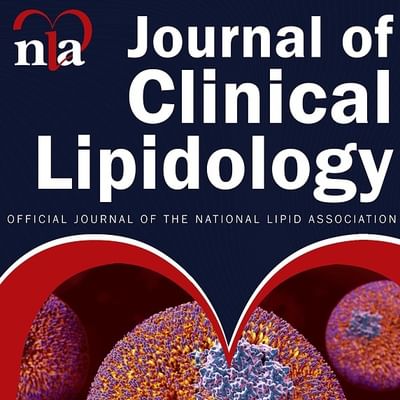- Undergraduate
Bachelor's Degrees
Bachelor of ArtsBachelor of EngineeringDual-Degree ProgramUndergraduate AdmissionsUndergraduate Experience
- Graduate
Graduate Experience
- Research
- Entrepreneurship
- Community
- About
-
Search

Peter Chin
Professor of Engineering
Overview
Peter Chin is a professor of engineering at Dartmouth and director of the LISP—Learning, Intelligence + Signal Processing—Lab. He and his students are investigating fundamental questions such as, "Can Intelligence be learned?" at the intersection of signal processing, machine learning, game theory, differential geometry, extremal graph theory, and computational neuroscience. He is currently an associate editor of IEEE Transactions on Computational Social Systems, and has served as co–chair of the annual SPIE/DSS Conference on Cyber Sensing, and symposium chair of the GlobalSIP conference.
Research Interests
Machine learning; artificial intelligence; differential geometry; game theory; signal processing; compressive sampling theory; computational neuroscience; extremal graph theory; general relativity; mathematical physics; mathematical finance
Education
- BS, Electrical Engineering, Computer Science, and Mathematics, Duke University 1993
- PhD, Mathematics, MIT 1998
Awards
- Faculty Scholar Award, Duke University
- George Sherred III Award, Duke University
- Julia Dale Memorial Award, Duke University
Professional Activities
- Associate Editor, IEEE Transactions on Computational Social Systems, 2018–current
- IEEE/ACM International Conference on Advances in Social Networks Analysis and Mining, Multi-Track Co-Chair, 2021
- Complex Networks, Program Committee Member, 2018–2022
- IEEE Global SIP, Co-Chair on Cyber Sensing Conference, 2016–2017
- SPIE DSS Conference, Co-Chair on Cyber Sensing Conference, 2013–2020
- 47th Annual Conference on Information Sciences and Systems, Symposium Chair on Deep Learning & Sparse Representation, 2013
- Workshop on Event-based Media Integration and Processing (w/ ACM), Co-Chair, 2013
- Workshop on Science of Security at London Institute of Mathematics Sciences , Co-organizer, 2012
- MILCOM, Session Co-Chair on Compressive Sensing, 2011 & 2012
- 45th Annual Conference on Information Sciences and Systems, Session co-Chair on Compressive Sensing, 2011
- International Symposium on Collaborative Technologies & Systems, Technical Committee Member and Session Chair, 2009
Research Projects
-
nFlip: Deep reinforcement learning in multiplayer FlipIt
nFlip: Deep reinforcement learning in multiplayer FlipIt
Reinforcement learning has shown much success in games such as chess, backgammon, and Go. However, in most of these games, agents have full knowledge of the environment at all times. We describe a deep learning model that successfully maximizes its score using reinforcement learning in a game with incomplete and imperfect information. We apply our model to FlipIt (1), a two-player game in which both players, the attacker and the defender, compete for ownership of a shared resource and only receive information on the current state upon making a move. Our model is a deep neural network combined with Q-learning and is trained to maximize the defender's time of ownership of the resource. We extend FlipIt to a larger action-spaced game with the introduction of a new lower-cost move and generalize the model to multiplayer FlipIt.
(1) van Dijk, M, Juels, A, Oprea, A, Rivest, RL, FlipIt: The Game of "Stealthy Takeover." Journal of Cryptology, 26, 655–713 (2013) -
Integrated compressive sensing microscope for high-speed functional biological imaging
Integrated compressive sensing microscope for high-speed functional biological imaging
We are developing algorithms and a complementary metal oxide semiconductor (CMOS) imager to perform high speed voltage imaging of brain activities.
-
Topological machine learning
Topological machine learning
We are investigating how to combine recent advances in topological data analysis with recent advances in machine learning to enhance multiple hypothesis tracking system. Our goal is to improve detecting, clustering, classifying and tracking of various patterns-of-life trajectories by developing the capability to distinguish behavioral types at all scales.
-
Manifold learning to design recurrent architecture
Manifold learning to design recurrent architecture
Successful next generation AI/ML for real-world applications must be able to deal with incomplete, sparse and noisy data as well as unexpected or adversarial circumstances that might arise while solving real world military problems. Furthermore, successful models must be able to learn new concepts with few examples. Unfortunately, even in this age of commodity machine learning models, one still needs to train new models with a large amount of training examples to achieve the requisite performance from deep neural networks. The resulting models often lack robustness, explainability, and human-level intelligence.
One of the best models for intelligence is the one inspired by human brain itself, which can support robust and massive parallelism with ease. We are exploring two related aspects of human brain processing that will play a key role in a Third Wave AI revolution: (1) a meso-scale cortical computation that easily finds low dimensional manifolds where learning can naturally take place, and (2) recurrent module networks, as thin as one- or two-layer networks, akin to cellular automata, trained on time sequences rather than input-output pairs. We believe this process of simplification and automata implementation is a better model of the human neocortex than current state-of-the-art deep networks whose optimized architectures are often ad hoc and do not reflect biological reality. This project is being sponsored in part by DARPA. -
Spectral interpretations of essential subgraphs for threat detection
Spectral interpretations of essential subgraphs for threat detection
We are developing a framework using advanced tools from random graph theory and spectral graph theory to carry out the quantitative analysis of the structure and dynamics of large networks—with the focus of graph merging and subgraph detection. This framework, using information theory as a demarcative tool, enables one to carry out analytic computations of observable network structures and capture the most relevant and refined quantities of real-world networks.
Selected Publications
- Yu, R., Wood, A., Cohen, S., Hershcovitch, M., Waddington, D., Chin, P., "Biologically Plausible Complex-Valued Neural Networks and Model Optimization." In: Maglogiannis, I., Iliadis, L., Macintyre, J., Cortez, P. (eds) Artificial Intelligence Applications and Innovations. AIAI: IFIP Advances in Information and Communication Technology, vol 646. Springer, Cham. 2022 https://doi.org/10.1007/978-3-031-08333-4_30
- Greige, L., Chin, P., "Deep Reinforcement Learning for FlipIt Security Game." In: Benito, R.M., Cherifi, C., Cherifi, H., Moro, E., Rocha, L.M., Sales-Pardo, M. (eds) Complex Networks & Their Applications X. COMPLEX NETWORKS 2021. Studies in Computational Intelligence, vol 1015. Springer, Cham. 2022 https://doi.org/10.1007/978-3-030-93409-5_68
- Dang, T., Thakkar, O., Ramaswamy, S., Mathews, R., & Beaufays, F., Chin, S., "Revealing and Protecting Labels in Distributed Training." In 35th Conference on Neural Information Processing Systems, 2021
- Zhou, Xiao and Qiu, Shangran and Joshi, Prajakta S. and Xue, Chonghua and Killiany, Ronald J. and Mian, Asim Z. and Chin, Sang P. and Au, Rhoda and Kolachalama, Vijaya B., "Enhancing magnetic resonance imaging-driven Alzheimer's disease classification performance using generative adversarial learning," Alz Res Therapy 13, 60. 2021 https://doi.org/10.1186/s13195-021-00797-5
- Pedro Colon-Hernandez, Yida Xin, Henry Lieberman, Catherine Havasi, Cynthia Breazeal, and Peter Chin, "RetroGAN: A Cyclic Post-Specialization System for Improving Out-of-Knowledge and Rare Word Representations." In Findings of the Association for Computational Linguistics: ACL-IJCNLP, 2021
- Dai, P. & S. Chin,"Training Many-to-Many Recurrent Neural Networks with Target Propagation." In: Farkaš, I., Masulli, P., Otte, S., Wermter, S. (eds) Artificial Neural Networks and Machine Learning – ICANN Lecture Notes in Computer Science, vol 12894. Springer, Cham. 2021 https://doi.org/10.1007/978-3-...
- Shin, J., D. Tran, J. Stroud, Peter Chin, Trac Tran, and Mark Foster, "A minimally-invasive lens-free computational microendoscope,"Science Advances, December, 2019
- Kieran Wang, Sie-Yue Wang, Xue Han, Peter Chin, "Protecting Neural Networks with Hierarchical Random Switching: Towards Better Robustness-Accuracy Trade-off for Stochastic Defenses," Proceedings of IJCAI, 2019
- Jacob Harer, Onur Ozdemir, Tomo Lazovich, Christopher P. Reale, Rebecca L. Russell, Louis Y. Kim, Peter Chin, "Learning to Repair Software Vulnerabilities with Generative Adversarial Networks," Proceedings of Neurips, 2018
- Peter Chin, Jonathan Cohen, Elizabeth Reiley, Alison Ebaugh, Mykola Hayvanovych, Jacob Harer, Gavin Brown, "A Mathematical Analysis of Network Controllability Through Driver Nodes," IEEE Transactions on Computational Social Systems, 2017
- Paul Bendich, Sang Chin, Jesse Clarke, Jonathan DeSena, John Harer, Elizabeth Munch, Andrew Newman, David Porter, David Rouse, Nate Strawn, Adam Watkins, "Topological and Statistical Behavior Classifiers for Tracking Applications," IEEE Transactions of Aerospace and Electronic Systems, 2016
- Peter Chin, Anup Rao, Van Vu, “Stochastic Block Model and Community Detection in the Sparse Graphs: A spectral algorithm with optimal rate of recovery”, proceedings of COLT 2015
Patents
News













